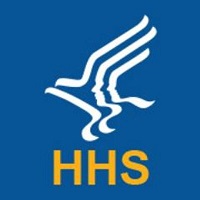 To More Appropriately and Effectively Meet Beneficiaries’ Emergency Needs
To More Appropriately and Effectively Meet Beneficiaries’ Emergency Needs
Supporting ambulance triage options aims to allow beneficiaries to receive care at the right time and place
The U.S. Department of Health and Human Services (HHS) (@HHSGov), Center for Medicare and Medicaid Innovation (Innovation Center), which tests innovative payment and service delivery models to lower costs and improve the quality of care, announced a new payment model for emergency ambulance services that aims to allow Medicare Fee-For-Service (FFS) beneficiaries to receive the most appropriate level of care at the right time and place with the potential for lower out-of-pocket costs.
“This model will create a new set of incentives for emergency transport and care, ensuring patients get convenient, appropriate treatment in whatever setting makes sense for them,” said HHS Secretary Alex Azar. “Today’s announcement shows that we can radically rethink the incentives around care delivery even in one of the trickiest parts of our system. A value-based healthcare system will help deliver each patient the right care, at the right price, in the right setting, from the right provider.”
The new model, the Emergency Triage, Treat and Transport (ET3) model, will make it possible for participating ambulance suppliers and providers to partner with qualified health care practitioners to deliver treatment in place (either on-the-scene or through telehealth) and with alternative destination sites (such as primary care doctors’ offices or urgent-care clinics) to provide care for Medicare beneficiaries following a medical emergency for which they have accessed 911 services. In doing so, the model seeks to engage health care providers across the care continuum to more appropriately and effectively meet beneficiaries’ needs. Additionally, the model will encourage development of medical triage lines for low-acuity 911 calls in regions where participating ambulance suppliers and providers operate. The ET3 model will have a five-year performance period, with an anticipated start date in early 2020.
“The ET3 model is yet another way CMS is transforming America’s healthcare system to deliver better value and results for patients through innovation,” said CMS Administrator Seema Verma. “This model will help make how we pay for care more patient-centric by supporting care in more appropriate settings while saving emergency medical services providers precious time and resources to respond to more serious cases.”
Currently, Medicare primarily pays for unscheduled, emergency ground ambulance services when beneficiaries are transported to a hospital emergency department (ED), creating an incentive to transport all beneficiaries to the hospital even when an alternative treatment option may be more appropriate. To counter this incentive, the ET3 model will test two new ambulance payments, while continuing to pay for emergency transport for a Medicare beneficiary to a hospital ED or other destination covered under current regulations:
- payment for treatment in place with a qualified health care practitioner, either on-the-scene or connected using telehealth; and
- payment for unscheduled, emergency transport of Medicare beneficiaries to alternative destinations (such as 24-hour care clinics) other than destinations covered under current regulations (such as hospital EDs).
The ET3 model encourages high-quality provision of care by enabling participating ambulance suppliers and providers to earn up to a 5% payment adjustment in later years of the model based on their achievement of key quality measures. The quality measurement strategy will aim to avoid adding more burden to participants, including minimizing any new reporting requirements. Qualified health care practitioners or alternative destination sites that partner with participating ambulance suppliers and providers would receive payment as usual under Medicare for any services rendered.
The model will use a phased approach through multiple application rounds to maximize participation in regions across the country. In an effort to ensure access to model interventions across all individuals in a region, CMS will encourage ET3 model participants to partner with other payers, including state Medicaid agencies.
CMS anticipates releasing a Request for Applications in Summer 2019 to solicit Medicare-enrolled ambulance suppliers and providers. In Fall 2019, to implement the triage lines for low-acuity 911 calls, CMS anticipates issuing a Notice of Funding Opportunity for a limited number of two-year cooperative agreements, available to local governments, their designees, or other entities that operate or have authority over one or more 911 dispatches in geographic locations where ambulance suppliers and providers have been selected to participate.
Please visit the CMS website for more information.
